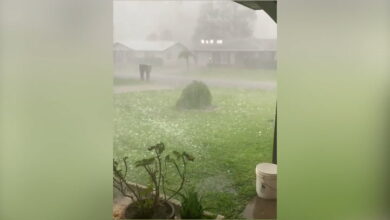‘New kind of light’ kills almost all microbes in a room and could prevent next pandemic, scientists say

A new type of ultraviolet light kills almost all microbes and could help avoid the next pandemic, researchers say.
The lights are safe for people and took less than five minutes to drop the number of indoor airborne microbes by over 98 per cent, according to the researchers who create it.
As such, the lights could be installed in the ceiling and help clean the air and stop transmission of diseases such as covid or the flu – and help avoid similar pandemics in the future.
“Far-UVC rapidly reduces the amount of active microbes in the indoor air to almost zero, making indoor air essentially as safe as outdoor air,” said David Brenner, director of the Center for Radiological Research at Columbia University Vagelos College of Physicians and Surgeons and co-author of the study.
“Using this technology in locations where people gather together indoors could prevent the next potential pandemic.”
The technology is called ‘Far-UVC light’ and is described in a new paper, ‘Far-UVC (222 nm) efficiently inactivates an airborne pathogen in a room-sized chamber’, published today in Scientific Reports.
“Far-UVC light is simple to install, it’s inexpensive, it doesn’t need people to change their behavior, and above all it’s a safe way to prevent the transmission of any virus, including the COVID virus and its variants, as well as influenza and also any potential future pandemic viruses,” said Dr Brenner in a statement.
A similar kind of light, UVC, has been known to clean air for decades, and is used in some specific cases to kill off microbes such as bacteria and viruses. But it is not safe to use it in indoor spaces where people gather, since it can be hazardous to people’s health, affecting their skin and eyes.
But recently researchers have been looking to the possibilities of far-UVC light, which has the same effect of destroying airborne viruses but without damaging the people who might also be in those spaces.
It has a shorter wavelength, so it cannot get into people’s skin or eye cells. But it is just as good at killing bacteria and viruses, because of their small size, the researchers said.
In recent years, scientists have successfully tested far-UVC in smaller experiments, using it in experimental chambers to see how it would affect both microbes and people. The new research is the first time that it has been used in life-sized rooms that mimic how it would be really used.
To do that, scientists used a chamber the size of the room and made it about as well-ventilated as a typical home or office, changing the air about three times an hour. They then sprayed a mist of bacteria into the room, and turned on the far-UVC lamps.
In five minutes, more than 98 per cent of the airborne microbes were inactivated. Even as new microbes were sprayed into the room, the safe level of microbes stayed down.
The cleaning effect was equivalent to changing the air in the room 184 times in the hour. Typically, it is only possible to achieve the equivalent of about 20 air changes at the best.
“Our trials produced spectacular results, far exceeding what is possible with ventilation alone,” said Kenneth Wood, lecturer in the School of Physics and Astronomy at the University of St. Andrews and senior author of the study. “In terms of preventing airborne disease transmission, far-UVC lights could make indoor places as safe as being outside on the golf course on a breezy day at St Andrews.”
Researchers noted that the technology is useful because it would works even as viruses change – it would work just as well on future covid variants, for instance, as well as other diseases that are yet to be identified. And the microbes would not become resistant over time in the same way they do with vaccines or drugs, the researchers said.





